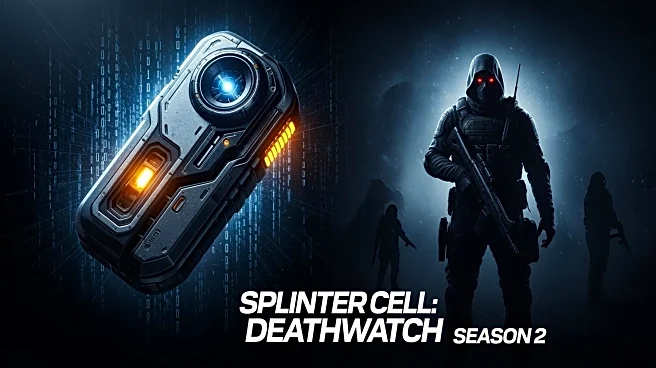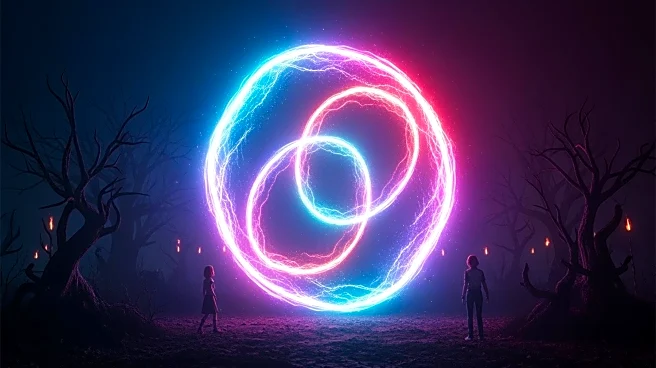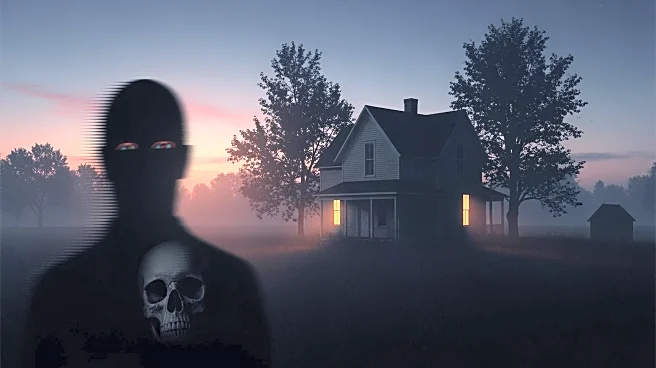What's Happening?
Netflix has announced the renewal of 'Splinter Cell: Deathwatch' for a second season shortly after the debut of its first season. The animated series, based on Tom Clancy's iconic character Sam Fisher,
features Liev Schreiber as the voice of an older Fisher. Showrunner Derek Kolstad revealed that Season 2 is already in pre-production, indicating the renewal was planned before the series premiere. The show explores a larger-scale story while maintaining character intimacy, and fans can expect a hybrid approach to storytelling in the upcoming season.
Why It's Important?
The renewal of 'Splinter Cell: Deathwatch' highlights Netflix's commitment to expanding its catalog of animated series based on popular video game franchises. This strategy taps into the existing fan base of the 'Splinter Cell' games, potentially attracting new viewers to the platform. The show's success could encourage further adaptations of video games into animated series, reflecting a growing trend in the entertainment industry. Additionally, the series contributes to Netflix's efforts to diversify its content offerings and strengthen its position in the competitive streaming market.
What's Next?
As Season 2 enters pre-production, fans can anticipate new developments in the storyline, including the fate of key characters and the introduction of new plot elements. The show's continuation may lead to increased interest in the 'Splinter Cell' franchise, potentially boosting sales of related video games and merchandise. Netflix's decision to renew the series early suggests confidence in its long-term appeal, which could influence future content strategies and collaborations with video game developers.
Beyond the Headlines
The adaptation of 'Splinter Cell' into an animated series reflects the broader trend of cross-media storytelling, where popular franchises are expanded across different formats. This approach allows for deeper exploration of characters and narratives, offering fans new ways to engage with beloved stories. The success of such adaptations may prompt discussions about the creative possibilities and challenges of translating interactive experiences into linear narratives.











